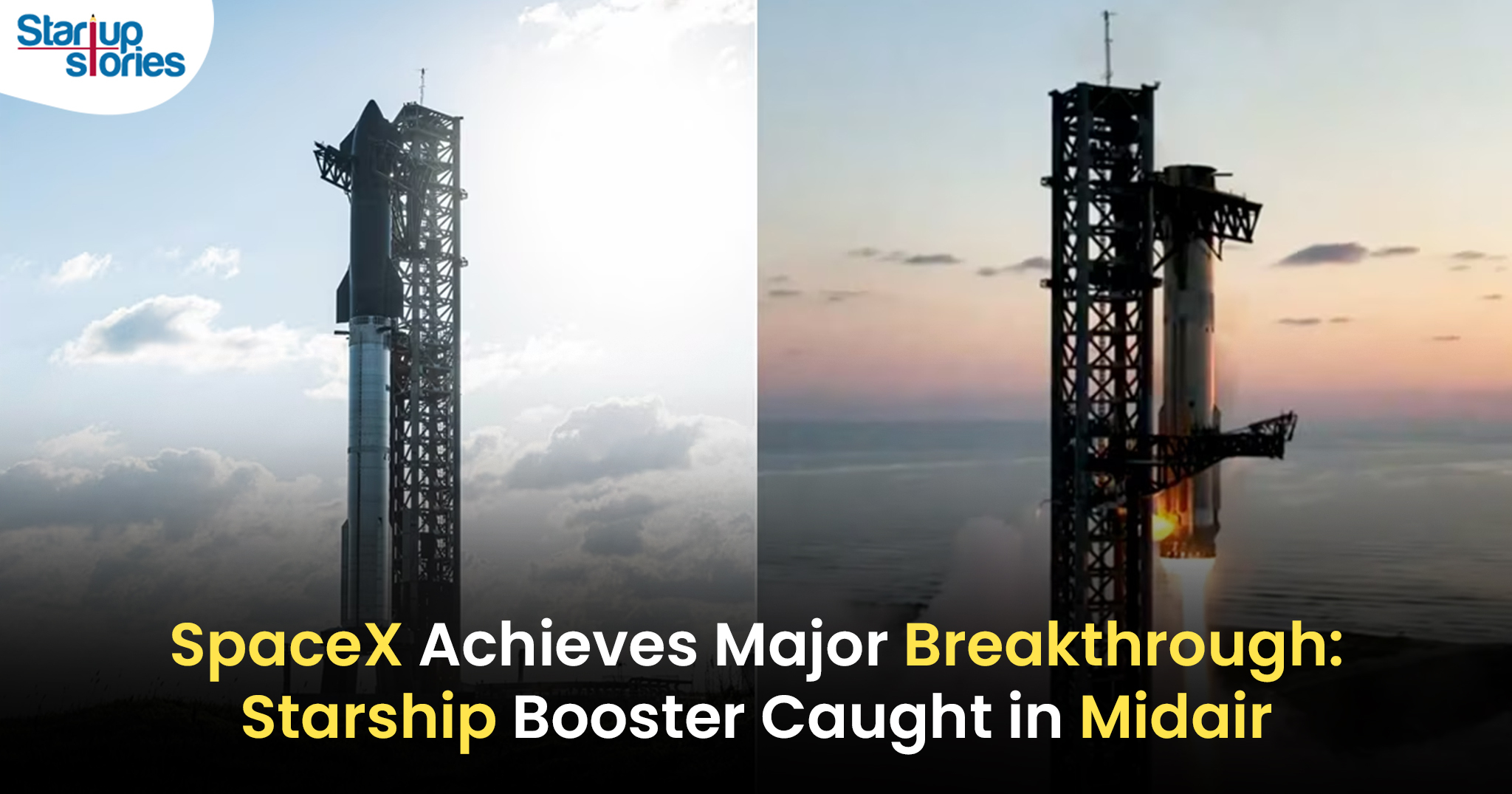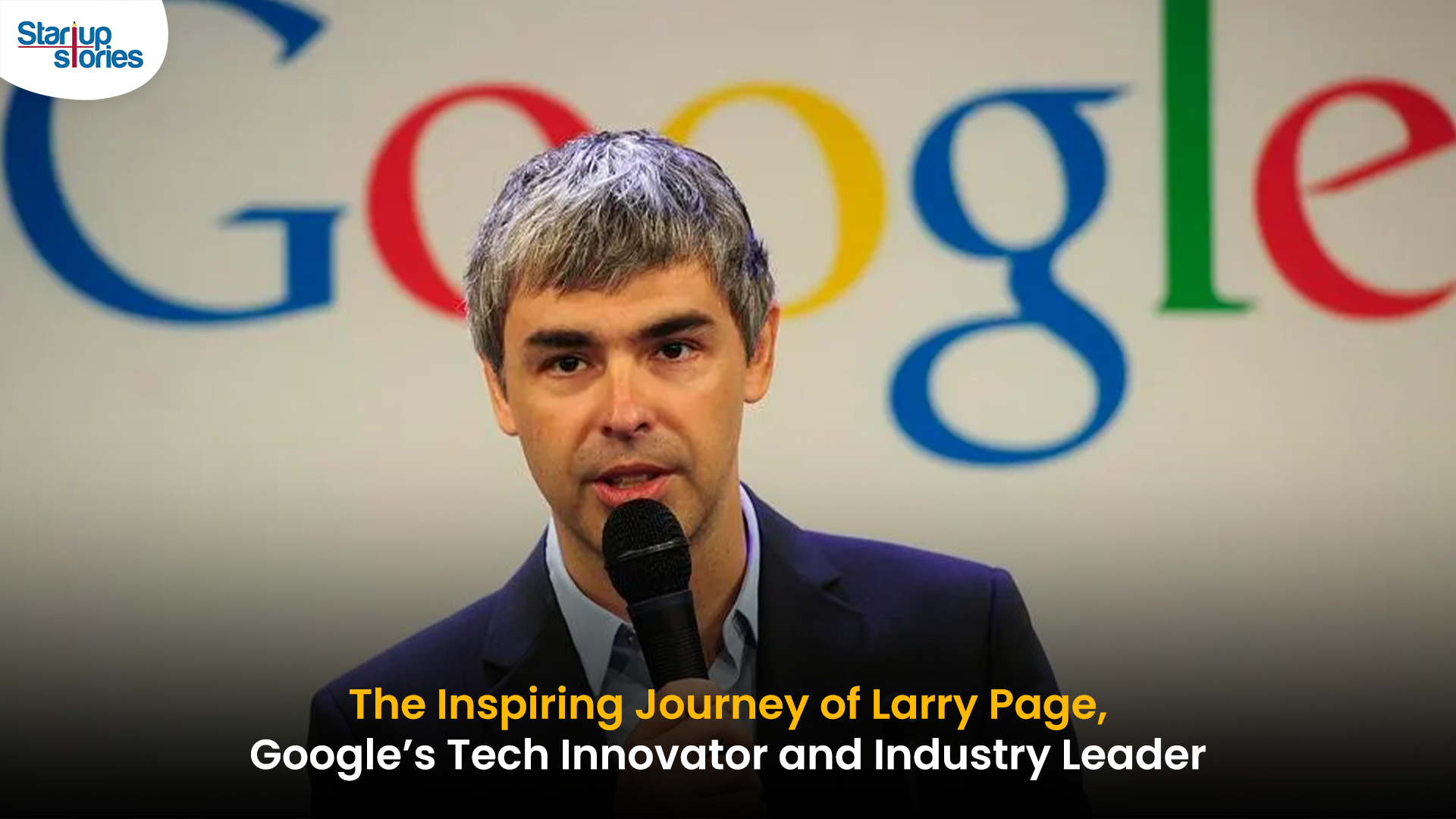Entrepreneur Stories
SpaceX Achieves World-First Booster Capture with Starship Test Flight!

SpaceX has made history by successfully capturing the Super Heavy booster of its Starship rocket in mid-air, marking a breakthrough in reusable rocket technology. This achievement occurred during the vehicle’s fifth test flight, where the booster was deftly caught by a pair of mechanical arms attached to the launch tower, known as “Mechazilla.”
A Bold Leap Toward Reusability
SpaceX’s initial plan had allowed for the booster to land in the Gulf of Mexico if conditions for capture were not met. “The chances of catching it on the first try were slim,” SpaceX officials noted, given the complexity of the maneuver. However, the lower half of the rocket performed flawlessly, returning to the Boca Chica launch pad and slotting into the waiting arms with precision.
Mission Highlights
- Launch Site: SpaceX Starbase, Boca Chica, Texas
- Key Innovation: Use of mechanical arms on the tower to catch the Super Heavy booster midair
- Rocket Separation: Occurred 2 minutes and 45 seconds after liftoff
- Controlled Water Landing: The upper stage, Starship, splashed down in the Indian Ocean after 40 minutes
During reentry, the Super Heavy booster decelerated from speeds of several thousand miles per hour, guided by its Raptor engines for a controlled descent. As it neared the 480-foot-tall tower, orange flames engulfed the booster, which appeared to hover momentarily before seamlessly docking into Mechazilla’s arms.
Meanwhile, the Starship upper stage continued its journey, reigniting its engines and successfully landing at a pre-designated spot in the Indian Ocean. Elon Musk celebrated the achievement on X (formerly Twitter), writing:
“Ship landed precisely on target! Second of the two objectives achieved.”
A Fast-Track Approach to Innovation
SpaceX’s rapid development philosophy embraces failure as part of the process. Just 18 months ago, during its inaugural flight, Starship exploded shortly after launch. However, Musk has consistently argued that early launches—even with a high likelihood of failure—allow SpaceX to collect critical data, accelerating progress.
Previous Test Flights
SpaceX’s recent flights reflect the fruits of that strategy. The previous test flight in June 2024 saw major improvements, with both the booster and spacecraft completing their maneuvers without incident. By catching the booster midair instead of landing it on the ground, SpaceX eliminates the need for complex infrastructure at the launch site. This innovation paves the way for faster vehicle turnarounds, potentially enabling multiple launches within hours.
NASA Collaboration and Ambitions for Mars
The success of this fifth test flight bolsters SpaceX’s partnership with NASA. The agency has contracted SpaceX for $2.8 billion to develop Starship as a lunar lander, with plans to transport astronauts to the Moon by 2026 as part of the Artemis program. NASA envisions using the Moon’s south pole as a base for future missions, where water ice could provide life support and fuel for Mars exploration.
Musk’s long-term goal is to send humans to Mars by 2028, advancing his vision of making humanity a “multi-planetary species.” Each successful flight brings that vision closer to reality.
Regulatory Challenges with the FAA
Despite SpaceX’s achievements, tensions with the Federal Aviation Administration (FAA) have escalated. The FAA had previously delayed launches requiring a review of environmental permits. Musk and the FAA also clashed over a $633,000 fine levied against SpaceX for allegedly failing to adhere to licensing conditions during prior flights.
Musk publicly threatened legal action against these regulatory challenges while SpaceX pushed back in a blog post, calling allegations of environmental harm “false reporting.”
Environmental Concerns Around Rocket Emissions
While rockets contribute fewer emissions than other modes of transport, experts are concerned about their environmental impact. Dr. Eloise Marais, a professor of atmospheric chemistry at University College London, highlighted dangers associated with black carbon emissions from rockets:
“Black carbon lasts longer at these altitudes,” Dr. Marais explained. “While Starship uses liquid methane—a relatively new propellant—we still lack comprehensive data on its emissions.”
The Path Forward
With this test flight, SpaceX has demonstrated that its innovative approach to spaceflight is yielding tangible results. The success of capturing the Super Heavy booster represents a giant leap forward in reusable rocket technology—a key component of Musk’s vision for interplanetary travel.
As SpaceX prepares for future missions—including NASA’s Moon landings—the ability to rapidly redeploy rockets will be crucial. While regulatory hurdles remain, SpaceX’s bold steps suggest that rapid reusable space travel may soon become a reality—bringing humanity closer to exploring new frontiers on the Moon, Mars, and beyond.
As Musk aptly put it:
“This isn’t just a flight test—every launch takes us one step closer to transforming humanity’s future in space.”
Entrepreneur Stories
Indian Man Quits JPMorgan, Takes 70% Pay Cut to Launch $6 Million Startup

Leaving behind a high-paying job at JPMorgan, an Indian entrepreneur embraced a 70% salary cut to pursue true purpose and passion in the startup world. Disenchanted with what he described as a “robotic” corporate routine, he sought meaningful work that made a real impact. This pivotal decision marked the beginning of his new journey, one focused on value creation rather than titles and corporate perks.
Powered by resilience and fresh perspective, the entrepreneur launched his own startup, prioritizing innovation and hands-on solutions. The road was challenging, but his vision resonated with the market: the startup quickly gained traction and raised $6 million—an impressive acknowledgement of its potential in a competitive landscape. Every hard lesson from early setbacks and bootstrapping paid off in real customer growth and investor confidence.
Today, his journey stands as an inspiring example for professionals seeking authentic success outside the corporate grind. By trading comfort for creative freedom, he grew a venture that solves important problems, generates jobs, and builds wealth beyond just salary. For ambitious founders, his story highlights the power of risk-taking, adaptability, and relentless focus on impact in India’s thriving startup ecosystem.
Videos
Larry Page: The Visionary Co-Founder Behind Google’s Global Success

Larry Page is a visionary technology entrepreneur and co-founder of Google, one of the world’s most influential companies. Born in 1973 in Michigan, Page grew up surrounded by computer technology, which inspired his passion for innovation from an early age. He studied computer engineering at the University of Michigan and later pursued his PhD at Stanford University, where he developed the revolutionary PageRank algorithm with Sergey Brin. This technology fundamentally changed the way search engines rank websites, making Google the most accurate and popular search engine globally.
The journey of Larry Page and Google began in 1998 when they officially launched the search engine from a small garage. Leveraging their unique algorithm, Google quickly surpassed competitors due to its ability to deliver highly relevant search results, transforming internet search forever. Under Larry Page’s leadership as CEO, Google expanded beyond search to launch groundbreaking products including YouTube, Gmail, and Google Maps, turning it into a global tech powerhouse that shapes how we access and interact with information online.
Larry Page later became the CEO of Google’s parent company, Alphabet Inc., driving innovation and investment in next-generation technologies such as artificial intelligence, autonomous vehicles, and healthcare solutions. His visionary leadership and commitment to technological advancement have cemented his legacy as one of the most influential figures in the tech industry. Today, Larry Page remains a key influencer in shaping the future of technology and digital innovation worldwide.
Entrepreneur Stories
India’s Tech Story: Airtel Spreads AI Access, Ohm Mobility Lessons

Bharti Airtel has launched the innovative “Airtel-Perplexity Blueprint,” partnering with Perplexity to provide over 360 million customers free access to Perplexity Pro for a year—a benefit valued at ₹17,000 ($200). This collaboration enables Airtel users across mobile, broadband, and digital TV to harness advanced capabilities in generative AI, including leading AI models like GPT 4.1, Claude, and Gemini, along with up to 300 Pro searches daily, image generation, document analysis, and personalized planning services. The move is seen as a milestone for telecom innovation and the democratization of AI in India, making powerful research and productivity tools accessible to a massive user base.
This strategic partnership positions Airtel as an “AI-first” telecom provider, allowing it to gain key insights into user interactions with artificial intelligence and adapt its networks for growing digital demands. For Perplexity, the tie-up grants exclusive access to India’s vast telecom audience, rapidly propelling the app to the No. 1 spot on the Indian App Store, surpassing global competitors like ChatGPT and Google Gemini. Airtel customers can activate their complimentary subscription seamlessly through the Airtel Thanks App, under the Rewards and OTTs section, reinforcing Airtel’s commitment to digital customer empowerment.
The broader Indian startup ecosystem reflects both breakthrough innovation and hard-earned lessons, illustrated by the recent shutdown of Ohm Mobility, an EV financing startup. Despite multiple pivots and industry-leading investors, Ohm Mobility struggled to achieve a sustainable business model—a reminder of the challenges in market fit and adaptability. As AI adoption accelerates and startup realities evolve, industry leaders like Airtel and Perplexity are setting new standards, while others, like Ohm Mobility, offer valuable insights on resilience and the importance of business model flexibility in India’s dynamic tech landscape.











binance
April 15, 2025 at 8:32 am
I don’t think the title of your article matches the content lol. Just kidding, mainly because I had some doubts after reading the article.
kgo39
June 7, 2025 at 10:50 am
clomiphene medication uk can i purchase cheap clomiphene online how can i get generic clomid pill can you get cheap clomid prices where to buy clomiphene tablets can you get generic clomid online clomiphene medication
binance акаунтын ашу
July 17, 2025 at 4:17 pm
I don’t think the title of your article matches the content lol. Just kidding, mainly because I had some doubts after reading the article.
1WIN
August 10, 2025 at 4:52 am
https://t.me/s/Official_1win_kanal/229
1 win
August 12, 2025 at 11:21 am
Официальный Telegram канал 1win Casinо. Казинo и ставки от 1вин. Фриспины, актуальное зеркало официального сайта 1 win. Регистрируйся в ван вин, соверши вход в один вин, получай бонус используя промокод и начните играть на реальные деньги.
https://t.me/s/Official_1win_kanal/321
fitfi
August 22, 2025 at 10:51 pm
Your article helped me a lot, is there any more related content? Thanks! https://www.binance.com/kz/register?ref=RQUR4BEO
binance тркелгсн жасау
October 7, 2025 at 11:06 am
Your article helped me a lot, is there any more related content? Thanks!
MM88
November 7, 2025 at 5:14 pm
Với giao diện mượt mà và ưu đãi hấp dẫn, MM88 là lựa chọn lý tưởng cho các tín đồ giải trí trực tuyến.
MM88
November 8, 2025 at 1:31 pm
Khám phá thế giới giải trí trực tuyến đỉnh cao tại MM88, nơi mang đến những trải nghiệm cá cược thể thao và casino sống động.
谷歌外推
November 10, 2025 at 8:05 am
采用高效谷歌外推策略,快速提升网站在搜索引擎中的可见性与权重。谷歌外推
ios超级签
November 12, 2025 at 8:37 am
苹果签名,苹果超级签平台,ios超级签平台ios超级签苹果企业签,苹果超级签,稳定超级签名
Kuwin
November 14, 2025 at 8:59 pm
kuwin sở hữu kho game đa dạng từ slot đến trò chơi bài đổi thưởng, mang đến cho bạn những giây phút giải trí tuyệt vời.
J88
November 21, 2025 at 10:15 am
Đến với J88, bạn sẽ được trải nghiệm dịch vụ cá cược chuyên nghiệp cùng hàng ngàn sự kiện khuyến mãi độc quyền.
iwin
November 26, 2025 at 1:31 pm
iwin – nền tảng game bài đổi thưởng uy tín, nơi bạn có thể thử vận may và tận hưởng nhiều tựa game hấp
GO88
November 29, 2025 at 10:43 am
Tham gia cộng đồng game thủ tại Go88 để trải nghiệm các trò chơi bài, poker phổ biến nhất hiện nay.